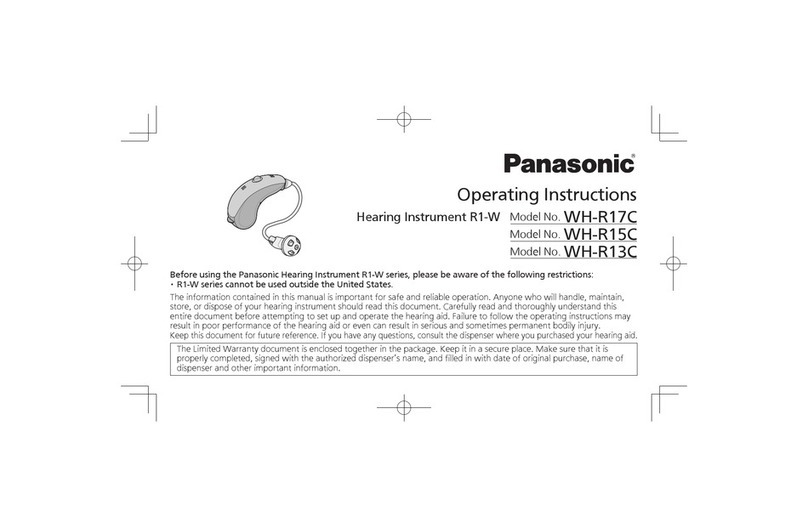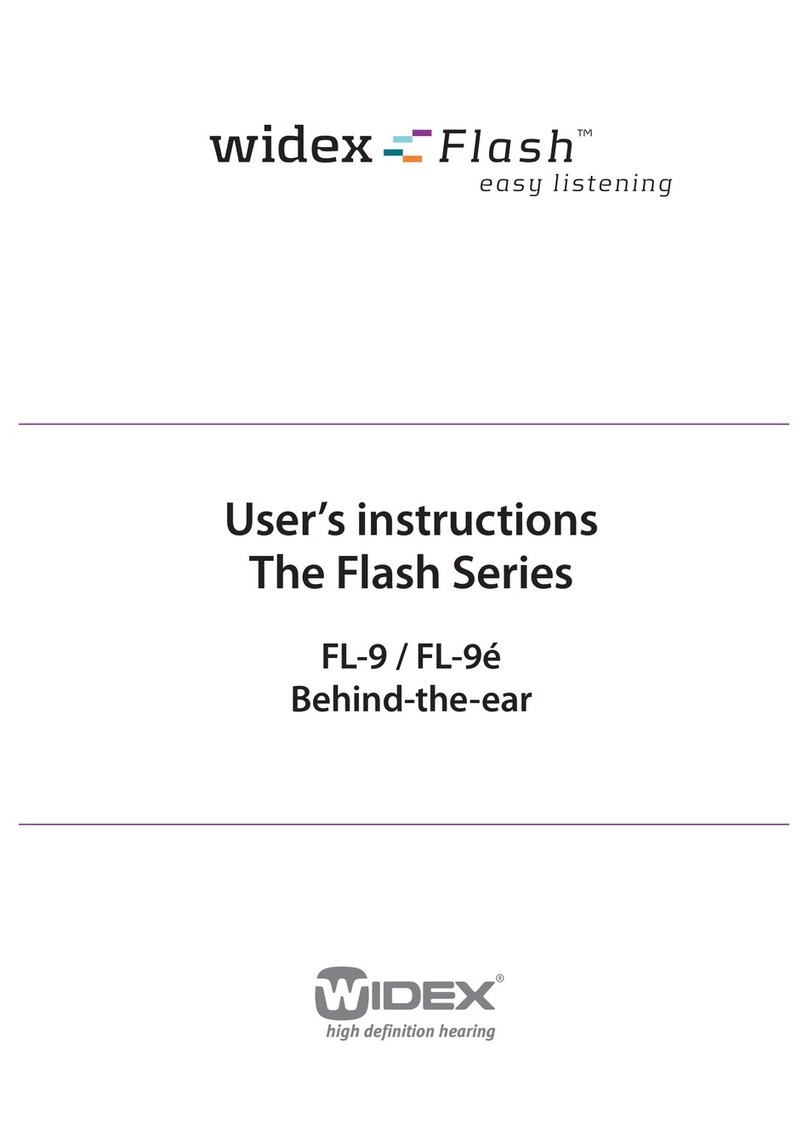
Before Use Introduction
2
Introduction
We would like to thank you for purchasing the
Panasonic Hearing Instrument WH-103JZ.
This hearing instrument helps optimize both intelligibility
and comprehension for the hearing impaired.
The type of hearing aid that will work best for you
depends on the type and severity of your hearing loss
and usage conditions. You will need to get a thorough
hearing evaluation and have your ears examined by an
ear specialist or an audiologist. They will suggest the
most appropriate type of hearing aid for you depending
on the type and degree of hearing loss. In order to get
the right hearing aid that will be tailored to meet your
individual needs and lifestyle, be sure to have your
hearing aid properly fitted and fine-tuned to your ears,
as an improper fit can cause discomfort and flexibility
issues, and even further damage to the ear.
It is important to keep in mind that hearing aids will not
restore normal hearing, nor will they halt the
progression of hearing loss. They are intended to
compensate for impaired hearing. They should be used
only for the purpose they are designed and directed.
Carefully read the instructions and make sure you fully
understand the operation of the hearing aid before
using it.
Contents
Before Use
Warning to Hearing Aid Dispensers ............... 3
Important Notice for Prospective Hearing Aid
Users.............................................................. 4
Children with Hearing Loss ............................ 5
Safety Precautions ......................................... 8
Usage Instructions........................................ 18
Preparations
Component Descriptions .............................. 20
Inserting Battery ........................................... 22
Charging....................................................... 24
Attaching the Earphone with Microphone..... 26
Operations
Operating the Instrument.............................. 30
Use with Telephone...................................... 32
Reference
Using the Strap............................................. 33
Care and Maintenance................................. 34
For First-Time Users .................................... 35
Troubleshooting Guide ................................. 36
Performance................................................. 39
Specifications ............................................... 43
Information ................................................... 44
Disposal Guidelines...................................... 46
Warranty and Customer Service .................. 47
YAH103JZA-2.book 2 ページ 2010年9月13日 月曜日 午前11時37分




























